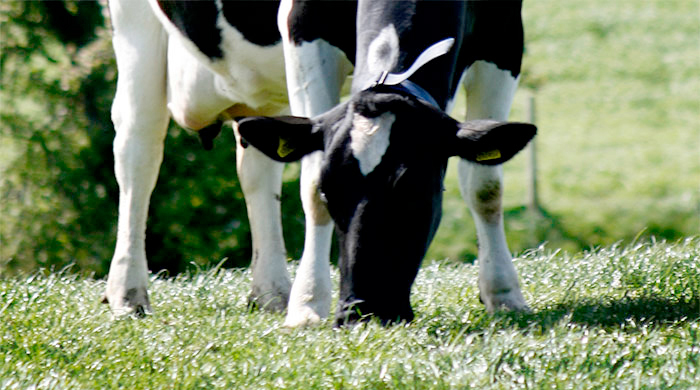
Livestock farmers are urged to reduce pasture contamination by planning grazing and anthelmintic control in sheep and lambs now, to decrease the risk of scour from nematodirus and PGE (Parasitic Gastroenteritis) in lambs at turnout and later in the grazing season, according to the April NADIS Parasite Forecast, sponsored by Merial Animal Health.
Sioned Timothy, veterinary adviser for Merial Animal Health, says: “Using safe grazing - that is, pasture not grazed by lambs last year, can prevent cases of nematodirosis and implementing good grazing management practices can significantly reduce the impact of other production-limiting parasites. If safe grazing is not available, the Nematodirus eggs shed onto the pasture by last year’s lambs will soon hatch into infective larvae.”
Climatic conditions influence the time of hatching as the eggs need an initial period of cold weather followed by a warm spell. Where these conditions have favoured early nematodirus egg hatching, then lambs born in February and March may need a prophylactic treatment before the end of April. If nematodirus egg hatching is delayed due to prolonged cold weather, or in more northern areas, later born lambs may require drenching in May.
“Faecal Egg Counts (FECs) are minimally useful for diagnosing nematodirus as it is the juvenile, non-egg producing stages that cause disease,” says Ms Timothy. “March and April temperatures and rainfall can significantly affect early season predictions of nematodirus, so farmers should check the NADIS or SCOPS websites regularly for the latest disease forecast, assess the risk on their own farm, and treat strategically.”
SCOPS recommend a white drench (Group 1 – Benzimidazoles) for the control of nematodirus. This group of wormers may have limited efficacy against other worm species, therefore monitoring of FECs of several lambs ten days after treatment should be considered to check for evidence of persistent infections.
Later in the spring, nematodirus may not be the only cause of profuse diarrhoea and rapid weight loss in lambs. Coccidosis and PGE due to other worm species might be the cause and farmers should consult their vet for diagnosis and advice.
Now is also a good time to review fluke control and take steps to minimise pasture contamination in the coming months. Sheep and out-wintered cattle in high risk areas that were treated for liver fluke in late autumn/early winter will need to be dosed again to clear chronic fluke infections.
Cattle that were treated around the time of housing may also benefit from a treatment at turnout to eliminate egg-producing adult fluke burdens. FECs can help demonstrate whether this is necessary.
Flukicides such as nitroxynil (Trodax®) or closantel are effective against late immature and adult stages of the parasite and should be used at this time of the year to reduce the pressure on triclabendazole.
Pasture management also provides the best basis for cattle parasite control as it creates low-risk pastures and allows susceptible youngstock to be turned out onto clean grazing. Taking a proactive approach to managing parasites early in the season, to minimise the build-up of infective larvae on the pasture is key to preventing cases of PGE later in the year.
Ms Timothy says: “In an ideal world grazing would be rotated annually but in reality it sometimes isn’t possible. It is therefore important to assess the risk of infection in naïve youngstock – those being turned out for their first full grazing season, including suckler calves born the previous autumn, and manage this accordingly.
“Second season grazing cattle and last year’s summer-born calves may also not have developed full immunity to gutworms and may be at risk of parasitic disease post-turnout. Discussing a treatment plan with your vet or animal health adviser (SQP) can help ensure youngstock are wormed appropriately.
“When it comes to lungworm – preparation is the key to preventing losses later in the year. The prevalence of disease varies from year to year so talk to your vet or SQP to develop a treatment or vaccination plan to suit your herd,” Ms Timothy concludes.
